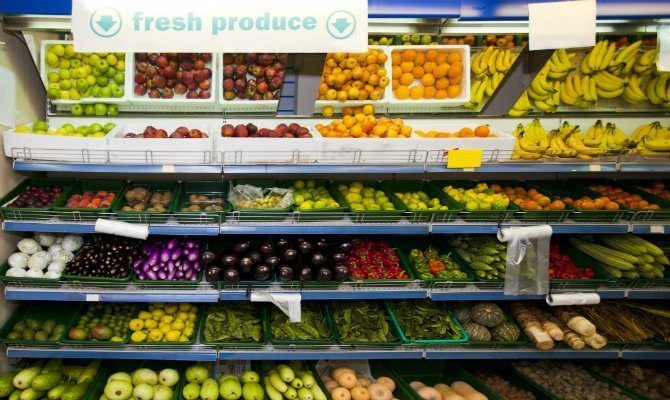This Is The Most Dangerous Whole Food At The Grocery Store
Are you familiar with salmonella, E. coli, and listeria? These are some of the most commonly discussed food pathogens. Salmonella is largely associated with raw chicken and eggs, but this bacteria, which can live for days outside the body and is impervious to freezing, thrives in the intestinal tract of cold- and warm-blooded animals. The threat of food poisoning is why we handle our raw meat so carefully, but how does it end up infecting produce, as it did in the recent cucumber contamination?
Click here for the History's Worst Food Poisoning Outbreaks slideshow.
The mishandling of food within our industrial food system leads to widespread contaminations; this one has already sickened 300 people across at least 22 states. We check our meat temperatures, refrigerate our leftovers, and abide by expiration dates, but the riskiest purchase you make in the grocery store is often the food you perceive as the safest. Pre-washed greens, fruit with a rind, and peanut butter have all been at the center of major outbreaks in the past few years.
These foods appear harmless and stable, and for the most part, they are, but centralized processing methods mean one minor contamination or safe-handling oversight will quickly spread disease across states as fast as trucks can carry the contaminated products to grocery stores nationwide. These outbreaks are born of human error.
Marion Nestle, a Ph.D. in molecular biology, the Paulette Goddard Professor of Nutrition, Food Studies, and Public Health at New York University, and author of Safe Food: Bacteria, Biotechnology, and Bioterrorism, explains that these contaminations are hardly a "natural" part of our food system.
"The operative word is preventable," she explains. "FDA rules now require preventive controls. To the extent that companies use them the way they are supposed to be used, they work (they were designed originally for NASA to prevent food poisoning episodes in outer space — not a pretty thought)."
Incidents like the salmonella contamination in cucumbers and the cycolsporiasis contamination in cilantro imported from Mexico earlier this summer are outliers in our food system — Americans consume around 654 billion pounds of food per year produced both in the country and abroad. Simple precautions can protect against pathogens. Use cooking temperature guidelines to ensure your food is cooked to a safe temperature and wash all fruits and vegetables thoroughly before eating, especially when eating them raw.
Ultimately, Nestle explains that "Every company making or selling food to the public should be using them, and diligently. Given that companies don't always do this, consumers have to protect themselves by following safe handling procedures. Even better, they should get involved in pressuring Congress to give the FDA more money to encourage companies to do what they are supposed to be doing."
Angela Carlos is the Cook Editor at The Daily Meal. Find her on Twitter and tweet @angelaccarlos.
